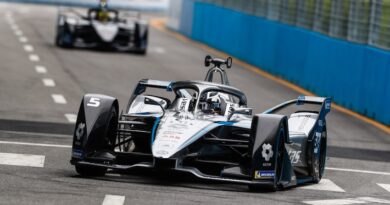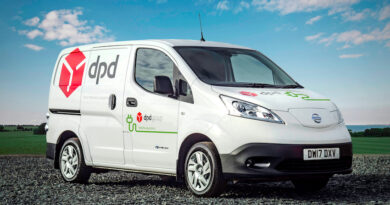Ford shares battery capacity plan as it targets 2 million EVs by 2030
Ford has launched a series of initiatives for sourcing battery capacity and raw materials as it steps up its EV production plans.
The manufacturer detailed its global EV targets, targeting an annual run rate of 600,000 electric vehicles by late 2023 and more than 2 million by the end of 2026, as part of its Ford+ plan. Ford expects a compound annual growth rate for EVs to exceed 90% through 2026, more than double the forecasted global industry growth.
Jim Farley, Ford’s president and CEO and president of Ford Model e, said: “Ford’s new electric vehicle lineup has generated huge enthusiasm and demand, and now we are putting the industrial system in place to scale quickly.
“Our Model e team has moved with speed, focus and creativity to secure the battery capacity and raw materials we need to deliver breakthrough EVs for millions of customers.”
Ford plans to invest over $50 billion in EVs through 2026, targeting total company adjusted EBIT margins of 10% and 8% EBIT margins for EVs by 2026.
As Ford creates a new EV supply chain that upholds its commitments to sustainability and human rights, the company continues to plan for more than half its global production to be EVs by 2030 and achieving carbon neutrality globally no later than 2050.
Ford in Europe on track to go all-electric by 2035
In Europe, the Ford Cologne Niehl Plant is currently undergoing major construction updates to prepare for the production of electric vehicles, starting in 2023. This includes the construction of a new 2500 square meter building that will be the home of the new and efficient pre-coating line on five floors.
Furthermore, the current manufacturing facilities will be updated with new energy efficient solutions that will save more than 2,000 tons of CO2 and more than 2,600 MWh of electric energy per year.
The first electric passenger vehicle is expected to roll-off the Cologne production line in 2023, with a second EV model to be built starting in mid-2024. Annual volume at the new plant is expected to reach 200,000 vehicles per year.
The redevelopment of the Niehl plant is a significant step towards helping Ford achieve an all-electric future in Europe and contributes to its target to be carbon neutral across its European footprint of facilities, logistics and suppliers by 2035.
Driving to the 600,000 EV run rate by late 2023
Ford plans to reach a 600,000 global EV run rate by late 2023 with the following EVs:
270,000 Mustang Mach-Es for North America, Europe and China
150,000 F-150 Lightnings for North America
150,000 Transit EVs for North America and Europe
30,000 units of an all-new SUV for Europe, whose run rate will significantly ramp in 2024
Ford is adding lithium iron phosphate (LFP) cell chemistry to its portfolio, alongside its existing nickel cobalt manganese (NCM) chemistry. This creates even more capacity for high-demand products and provides customers many years of operation with minimal range loss. It also reduces the reliance on scarce critical minerals such as nickel and, at current costs, brings a 10 to 15% bill of material savings for Ford versus NCM batteries.
The company confirmed it has secured 100% of the annual battery cell capacity needed – 60 gigawatt hours (GWh) – to support this 600,000 EV run rate by working with leading battery companies around the globe.
Driving to more than 2 million EVs by late 2026
Ford is building on agreements tied to its 600,000 run rate milestone and is taking them even further. The company now has sourced approximately 70% of the battery cell capacity it needs to support an annual global run rate of more than 2 million EVs by late 2026.
Ford and CATL – the world’s largest battery producer – have signed a separate non-binding MOU to explore a cooperation for supplying batteries in Ford’s markets across China, Europe and North America.
Ford also announced it plans to localize and use 40 GWh of LFP capacity in North America starting in 2026.
The company intends to use this additional capacity to complement three previously announced battery plants in Kentucky and Tennessee that are part of the BlueOval SK joint venture between Ford and SK On, which was officially formed last week. Ford has signed an additional MOU with SK On as well as Koç Holdings to create a joint venture in Turkey for expanded battery capacity there.
To support its joint ventures, Ford is direct-sourcing battery cell raw materials as well.
“Our team has been actively engaged with partners in the United States and around the world,” said Lisa Drake, Ford Model e vice president, EV Industrialization. “We will move fast in the key markets and regions where critical supplies are available, meeting with government officials, mining companies and processors and signing MOUs and agreements that reflect Ford’s ESG expectations and underpin Ford’s plan to bring EVs to millions.”






